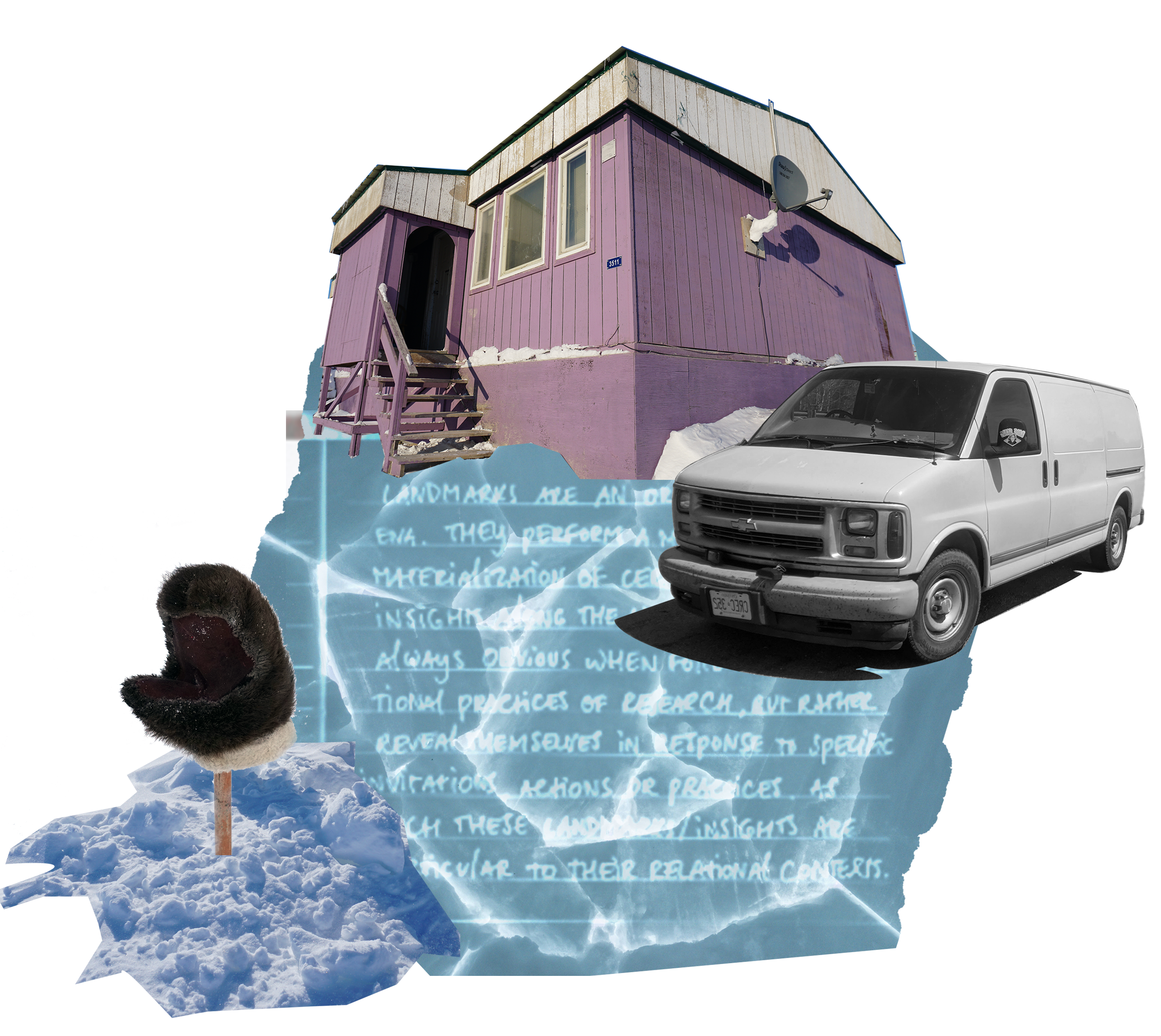Knowledge as Movement and Dwelling

Landmarks are defining features in the land that traditionally play an important role in Inuit topographical understandings of their land and its resources. They are important orienting features to keep one's bearing while travelling and to determine where one is located at any given moment[1].
As a figure in this Knowledge-Land-Scape, "Landmarks" perform the materialization of certain findings and emergent insights along the way.
This particular one, marks my understanding of how some knowledge only comes into being through movement- or only exists as movement.
Link to EEE protocol.
The way that the dirt smells at a particular corner in my city, where I have lived most of my adult life, has never felt as meaningful to me as it does after spending so much time on the move. The smell of catpee and rainwater, entangled with the life that was lived on that corner, matters. At least it matters to me. This dirt - a wet, stinking clump of black mud in my hand - its memories are from a different me. A me, that one day, after a lifetime of becoming, did no longer return to that corner. I had forgotten. But it hadn't. The dirt never left, never became. It just was. Holding on. Patiently waiting until I would come and collect my belongings.
Go outside, and touch some dirt.
Then return to Cut 1: Voices of Thunder, or Cut 3: Wayfaring the Bearwatch project
Cut 3: Wayfaring the BearWatch Project
- ↑ Aporta, C. (2004). Routes, trails and tracks: Trail breaking among the Inuit of Igloolik. Études/Inuit/Studies, 28(2), 9-38.
